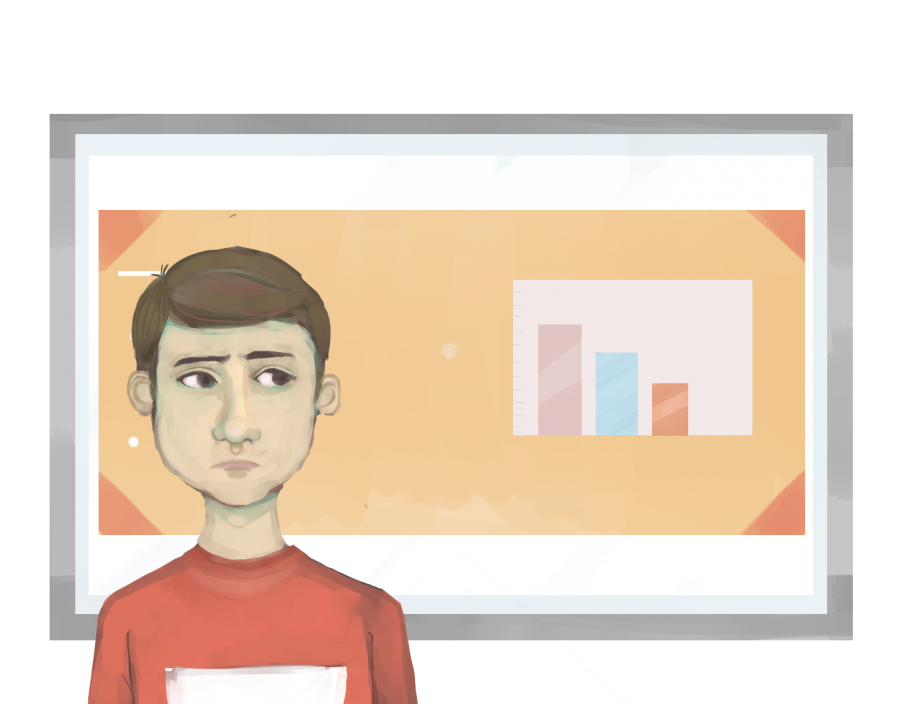In the United States, anxiety disorders affect 25.1 percent of adolescents between 13 and 18-years-old, according to Anxiety and Depression Association of America (ADAA). Though there are many types of anxiety disorders, feelings of nervous panic generally interfere with daily activities, are hard to control and can last a long time, according to Mayo Clinic.
School, TIME reports, can become an anxiety-inducing environment for teenagers. And when teenagers spend 900 to 1,000 hours on average in school per year, according to the Center for Public Education, school becomes a prominent part of a student’s time in adolescence.Your heart pounds and a fist is squeezing your heart. Inhale. Exhale. You stumble, trembling like a hypothermic, your world unfocused and fading. It’s so bad that it can’t be real. This can’t be real. You look around for the thing you are sure is seconds from slaying you. “Ok,” says your teacher. “Start whenever you’re ready.”
When students conduct presentations, they gain valuable communication skills and prepare for future professional and academic settings, according to the Mediterranean Journal of Social Sciences. Those with an anxiety disorder, however, are not in the same position as their peers when it comes to presenting.
[vc_custom_heading text=”Public speaking aides youth” use_theme_fonts=”yes”]
School, TIME reports, can become an anxiety-inducing environment for teenagers. And when teenagers spend 900 to 1,000 hours on average in school per year, according to the Center for Public Education, school becomes a prominent part of a student’s time in adolescence.Your heart pounds and a fist is squeezing your heart. Inhale. Exhale. You stumble, trembling like a hypothermic, your world unfocused and fading. It’s so bad that it can’t be real. This can’t be real. You look around for the thing you are sure is seconds from slaying you. “Ok,” says your teacher. “Start whenever you’re ready.”
[vc_btn title=”Read More” style=”flat” color=”success” link=”url:http%3A%2F%2Fwww.bearingnews.org%2F2018%2F10%2Fnow-youre-talking-classroom-staple-strikes-issue-with-students-2%2F|||”][vc_custom_heading text=”Problems follow presentations” use_theme_fonts=”yes”]
When students conduct presentations, they gain valuable communication skills and prepare for future professional and academic settings, according to the Mediterranean Journal of Social Sciences. Those with an anxiety disorder, however, are not in the same position as their peers when it comes to presenting.














































































